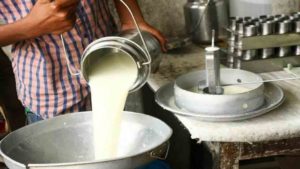
As a result, the policy priority has turned away from achieving self-sufficiency and toward providing a greater and more secure income for the farming population. The food processing industry (FPI) is one sector that has the ability to add value to farm produce, create new jobs, boost exports, and enhance the domestic supply chain. According to the Indian government, India ranks first in the world in the production of milk, pulses, and jute, second in fruits and vegetables, and third in cereals, with around 11.2 percent of total arable land. It is also the world’s sixth-largest food and grocery market.
The food processing industry contributed 7.9% of manufacturing GVA and 9.5 percent of agricultural value added in 2017-18. It is also a big employer, accounting for 11.4 percent of all organized manufacturing jobs. FPI has been selected as one of the primary thrust areas under the ‘Make in India’ Programme, recognizing its enormous potential in enabling inclusive growth.
Pandemic’s impact on the food processing industry
The Indian food processing industry was quick to embrace technology innovations following the pandemic outbreak last year, when digital usage was at its peak. Because of the digital revolution, the snack industry, in particular, has seen massive changes. The segment was dominated by automation, which transformed the Indian snack-making industry.
The huge shift in India’s culinary culture and traditions is also worth noticing. Consumers were hesitant to purchase packaged meals prior to the pandemic. They preferred to buy loose food from their trustworthy retailers. With the introduction of the coronavirus, they moved their focus to packaged meals that promised sanitation, safe packaging, and convenience. As a result, pre-packaged goods, such as ready-to-eat foods and frozen foods, have become increasingly popular in recent years.
Millennials, Generation X, and Generation Z have carved out a niche for themselves in the country’s snack sector. Last year’s work from home phase was punctuated by frequent snacking. The tendency has continued, and as a result, demand for savoury snacks, particularly namkeen, as well as confectionary items such as biscuits and cookies, has increased. The manufacturing, processing, distribution, and marketing of Indian snack foods all increased as a result of the surge in demand.
Indian snacks manufacturing industry on a growth trajectory
In the 1990s, the snacks sector was dominated by a few regional companies and a few large competitors. However, in today’s market, both large and small competitors have a fair portion of the market and are focusing on introducing new products. They want to thrill and surprise their customers, therefore they add variety to their menus to provide the perfect balance of regional and westernized flavours. This is why the snacks in different sections of the country have such a varied and distinct flavour. For example, fafda, khakhra, and dhokla are popular in Western India, whereas murukku and banana chips are popular in the South, and potato chips are popular in Northern India.
Another noteworthy trend that is gaining traction is the shift to healthy snacking. Consumers increasingly prefer to eat snacks that are flavourful, easy to obtain, and high in nutrition. Food production, particularly snack manufacturing, has grown more responsible and ethical as a result of changes in consumer behaviour. Consumers in today’s world are well-informed and savvy. Before making a purchase, they inspect the packing and labelling extensively.
Digitization of the industry
The industry faces a number of issues, including a scarcity of raw materials, inadequate storage capacity, and food waste. As a result, the urgent need of the hour was to embrace technical breakthroughs in order to overcome these bottlenecks, ensure product quality, and enable industry players to compete in the global market.
Digital adoption has emerged as a feasible strategy for meeting expanding customer demands while also increasing the sector’s output. Automation gained traction among the profusion of technologies to improve the operations of the food processing and snack manufacturing industries.
This new-age solution helps enhance productivity by taking care of mundane tasks and saving time and money. When machines take over manual tasks, food quality improves and safety regulations are strictly followed. The coronavirus has only accelerated the pace of digital disruption, and as a result, the food processing and snack manufacturing industries are becoming increasingly reliant on automation.
Summing Up
Although the snacking craze was influenced by the West, the players have given it the necessary Indian flavour and touch. The snacking industry in India has exploded in recent years. The snack manufacturing industry’s landscape has been altered by changes in consumption patterns, consumer lifestyles, and the pandemic, and increased demand for snacks. They are greatly increasing the market’s growth, and its future appears to be bright!

















